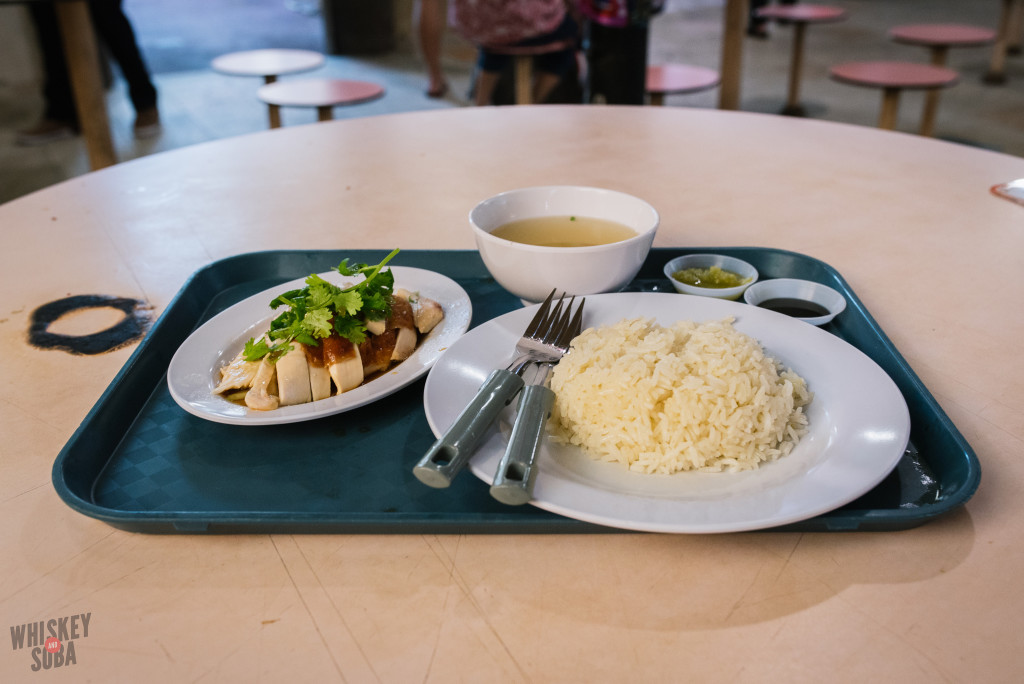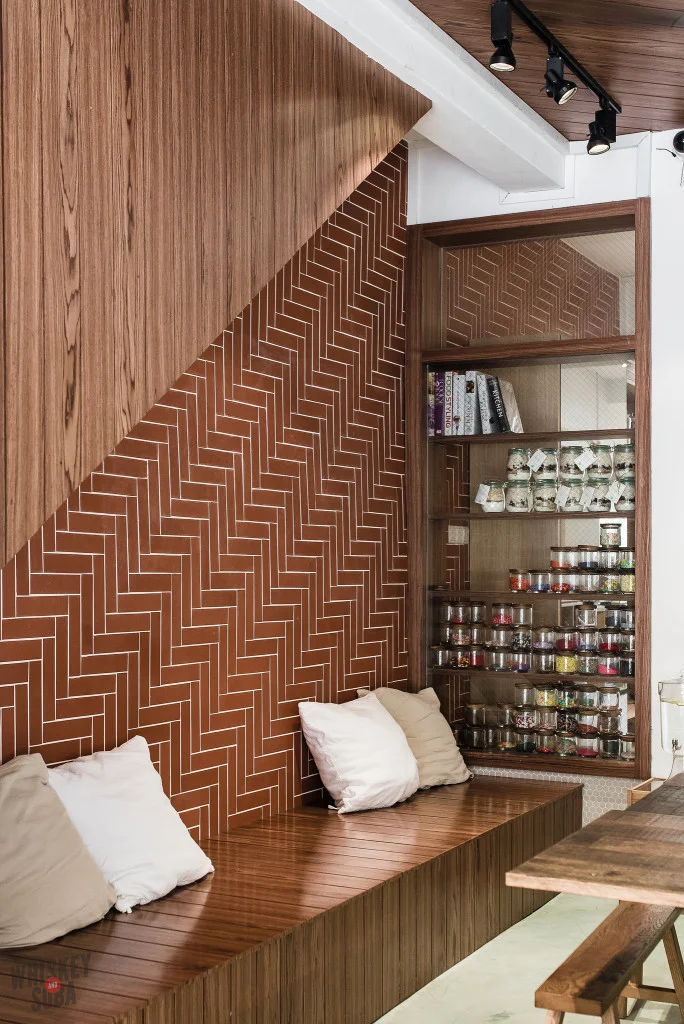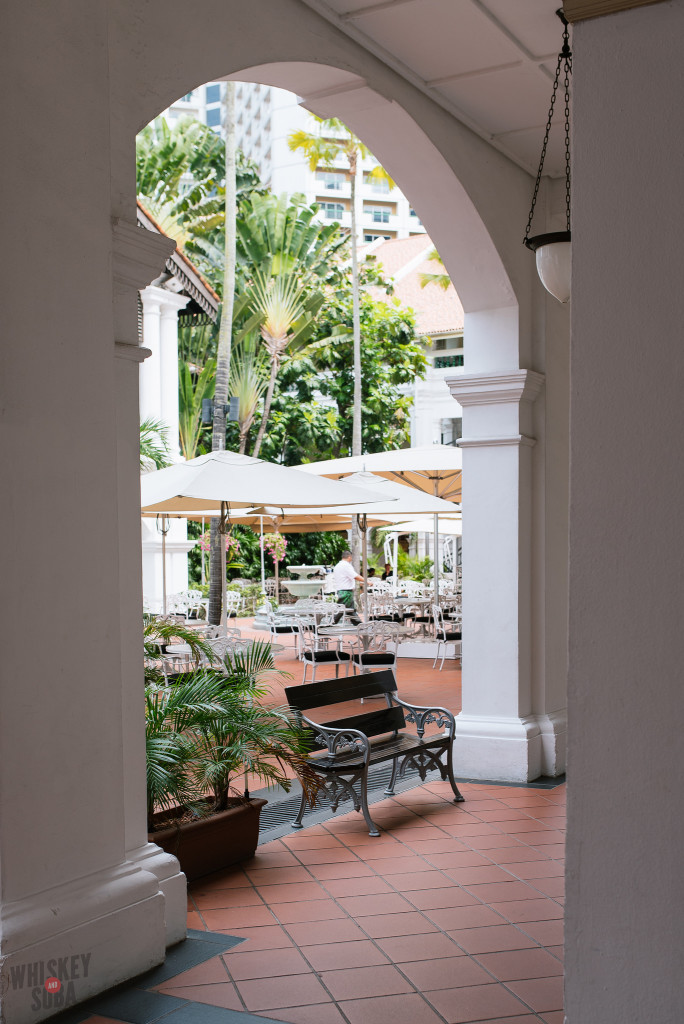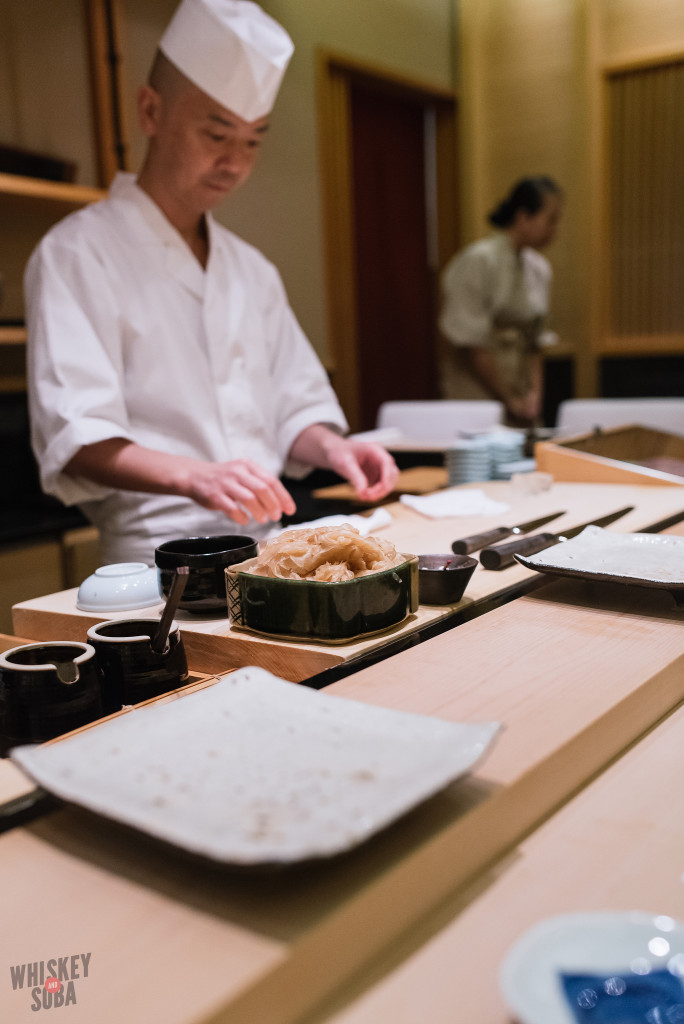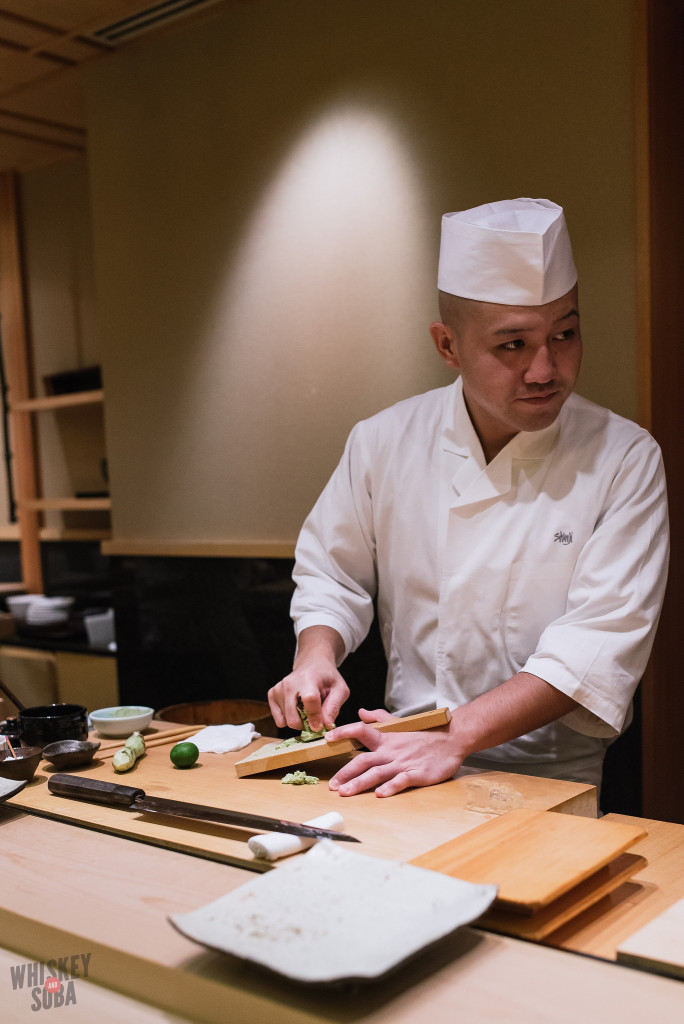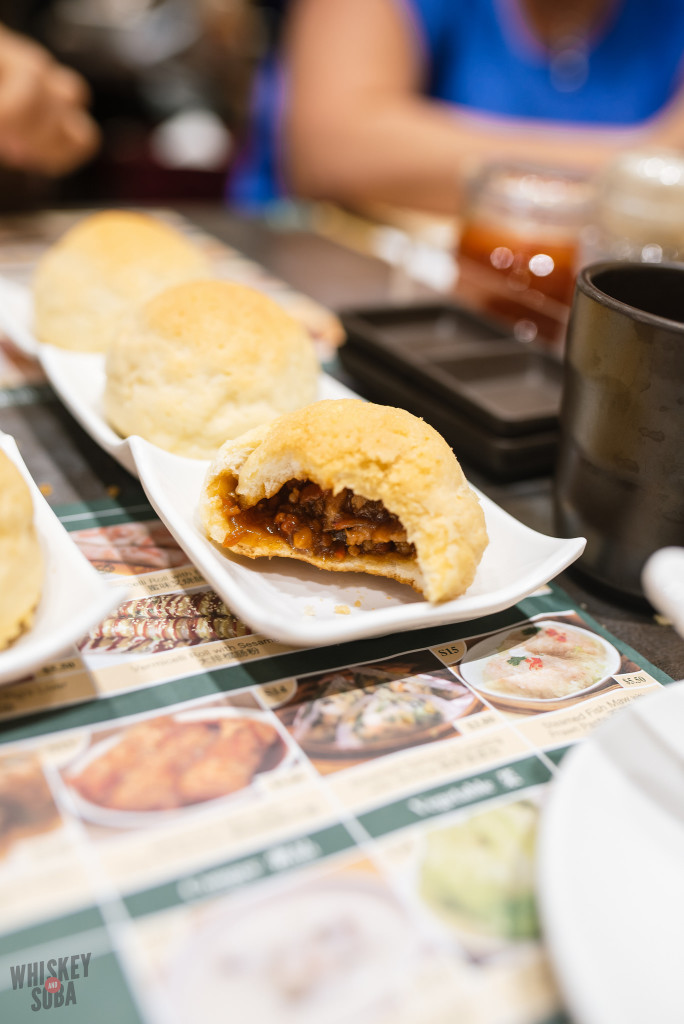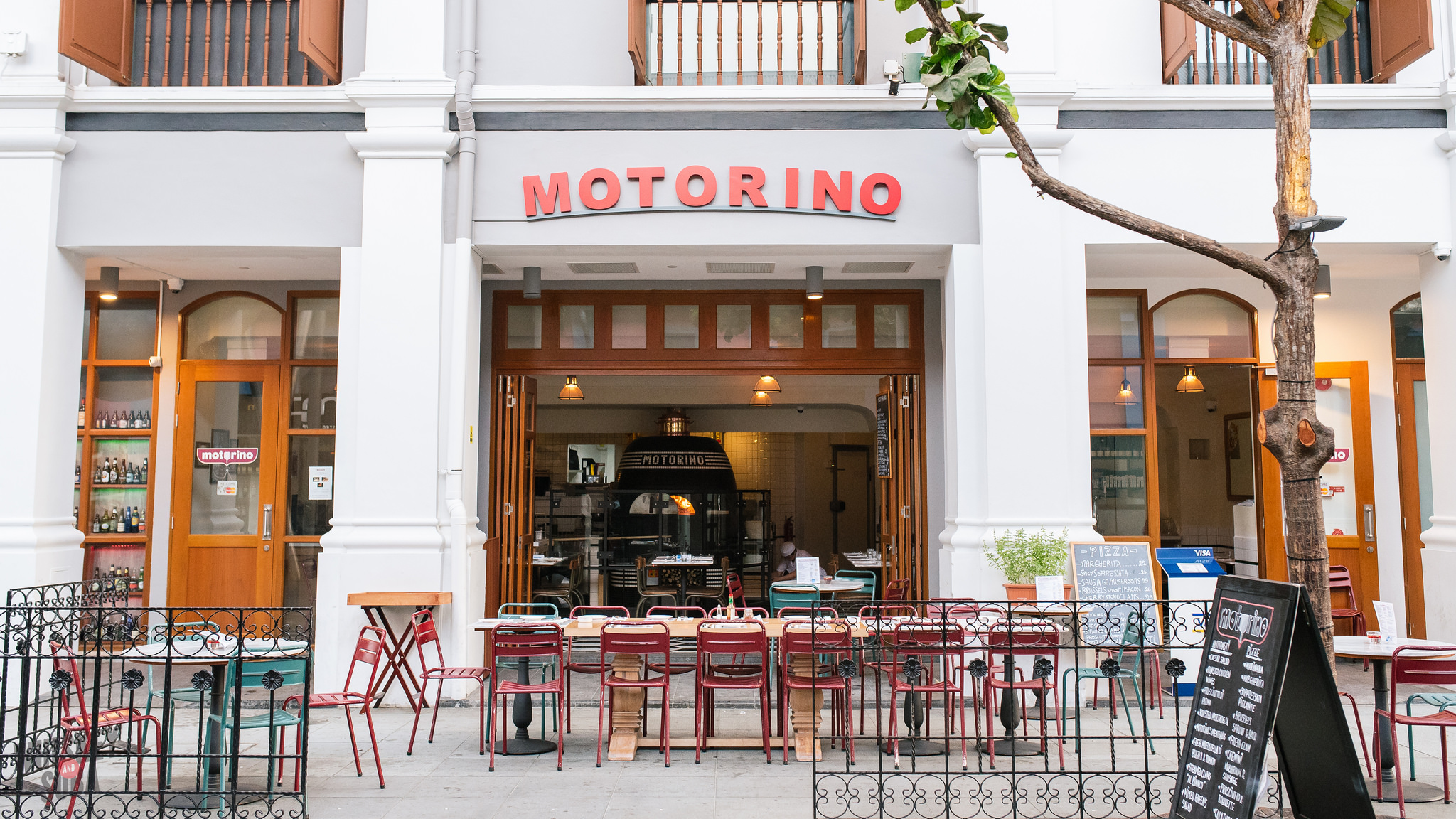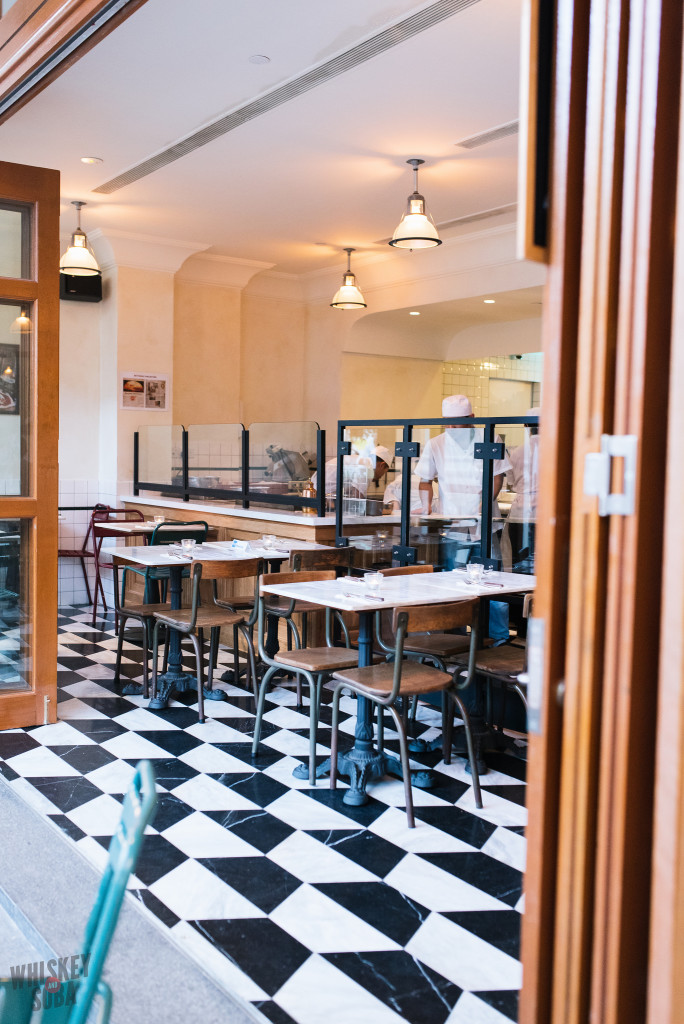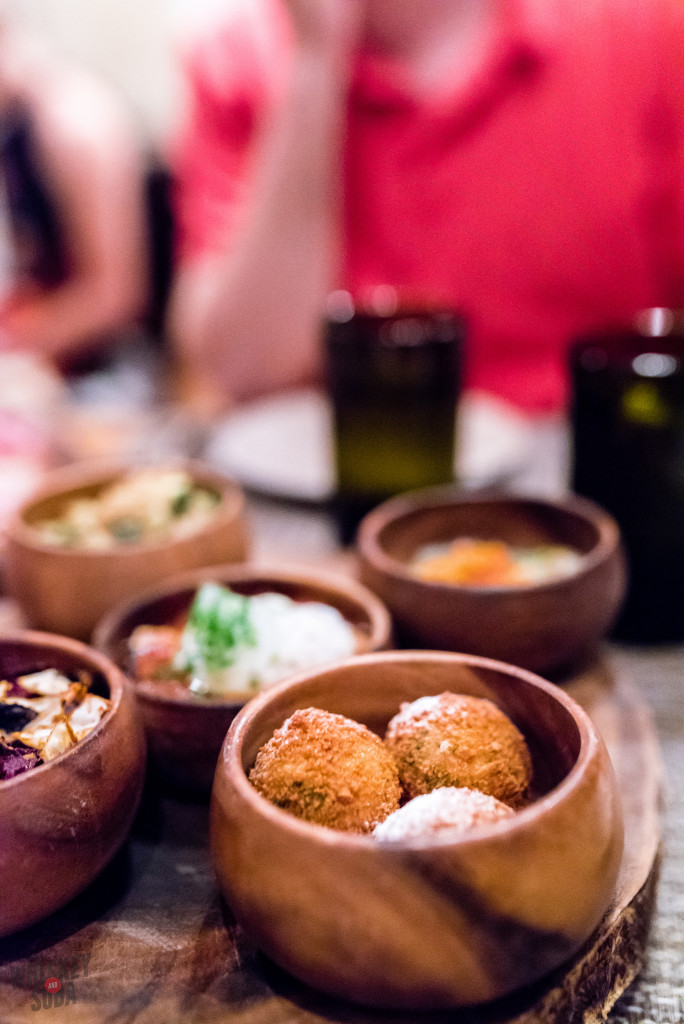Stuff to eat. Mostly around St. Louis.
Dumpling in Singapore
My early days in Singapore were rough: profuse and constant sweating, an apartment with walls so thin I could hear every loud, angry conversation my neighbors had, and no friends. I was a hot, tired, lonely manchild. I was also completely overwhelmed by the hundreds of eating choices within a 15 minute walk of my apart. So much so that I had taken to eating mostly grocery store sushi or attempting to cook on my tiny one-burner stove. I was in a food depression. After some Googling, I learned that the closest mall to me had this popular dumpling chain from Taiwan in it called Din Tai Fung (DTF). I decided I would man up and go eat there all by my lonesome.
That's where I had my first Xiao Long Bao, or soup dumpling, and my life was forever changed. I was going multiple times a week, trying everything I could. It became my go-to restaurant to take out of towners. The risk averse could stick with the XLB's and maybe a bowl of noodle soup, while the more intrepid could try the funky black and green century eggs.
Even now it remains Patricia and my "can't decide where to eat" restaurant. Twice on this past trip we ended up there. I've always loved that a meal there could be extremely healthy or the kind of glutinous feast that leaves you wheezing.
Simple starters range from the Oriental Saladin special vinegar dressing is a simple (below) to sliced duck in a crispy spring onion pastry.
Din Tai Fung Singapore Oriental Salad
Din Tai Fung Singapore Chili Oil Dumplings
If I'm not getting XLB's, which is rare, I'm getting the Oriental wantons in black vinegar and chili oil. The combination of Chinese vinegar and chili oil is just so goddamn good, I can't help but spoon the excess sauce into my mouth after I've killed off the wontons.
Din Tai Fung Singapore Wonton Soup
Din Tai Fung Singapore Wontons in broth
Every DTF has a window into the room where all dumplings and buns are made at lightning speed and steamed. Every dumpling is rolled out to an exact diameter, given an exact amount of meat, and folded exactly 18 times. All of this happens in seconds. I would be terrible at it.
At the nicer DTF locations, they have premium dumpling options, including chili crab and truffle. No longer able to resist temptation, I ordered a single Pork & Truffle Xiao Long Bao. One small dumpling, $5.00.
Was it worth it? Was it truffley? Oh mama. What makes a XLB magical is that solid meat aspic is in the filling, so when steamed, the aspic melts and the dumpling is magically filled with both a tiny meatball and piping hot soup. This truffle version had truffle in the broth, plus whole slices of shaved black truffles. It was truly a flavor bomb.
Din Tai Fung Singapore Pork Bun
I remember the first time Patricia and I tried Paradise Dynasty, a beautiful, huge restaurant at the top of the ION Orchard mall. I felt like I was cheating on Din Tai Fung with a younger, richer, more beautiful restaurant. "Don't worry, DTF! I'm sure the food here isn't as good as yours!" I thought to myself.
I was so wrong. Paradise Dynasty was better in every way. In an instant, Din Tai Fung became the ugly ex-girlfriend. I Brad Pitted Din Tai Fung. Paradise's focus is less on dim sum and more on soups, noodles, and more hearty entrees, but their dumplings are incredible.
All of their ads are for their 8 flavored XLB's (original, garlic, Szechuan, ginseng, foie gras, black truffle, cheesy, and crab roe), but the original is king. The dumpling's skin is softer and less dough, the soup and pork vastly more flavorful. They are the greatest XLB's I've ever had.
St. Louis has so few options with soup dumplings that you probably don't know how to eat them correctly. Here are the steps, in photos:
Look at your dumplings. Plan your attack. Choose the juiciest one.
Pick it up - GENTLY, MAN! - and place it on your spoon.
Poke a hole in it so the soup runs into your spoon. Drink said soup. Alternately, you can just go at it like a vampire: bite it and suck.
Dip the soupless dumpling into your mix of soy/vinegar/ginger.
Their other dumpling types are winners, too. The pan seared buns with a slightly sweet dough? Not sharing those. Their take on the dumplings in chili and vinegar? Not only are they way meatier than Din Tai Fung's, but the sauce has a much better balance thanks to some sweetness.
The fact I can't get dumplings this good in St. Louis makes me so, so sad. The only solution is that I will have to take on the endeavor myself, slaving away in my kitchen until I get it right. One day, Spencer's Dumpling Hut will be unveiled and all will rejoice.
Redhill Hawker Center
I'm standing in the middle of the Redhill hawker, a few minutes walk from the MRT station, already dripping with sweat. The fans of the open air food court don't do enough to cool me off, thanks to my pampered 24/7 air-conditioned life. I walk down the aisles, taking in the nearly 60 hawker stalls. Chicken rice, mee siam, curry chicken, BBQ stingray, dim sum, colorful iced desserts. Too many choices. Too hot to eat. Then I see it, like an oasis in the desert: the juice stand. One large sugar cane juice for me, one large mango-carrot juice for Patricia. Grand total: $3.70. Refreshed by the fresh juices - sugar cane juice rolled out of the long stalks, ripe mangoes blended with carrots - we continued the search for the perfect lunch.
Without visiting, it's impossible to understand the myriad of food options in Singapore. The country is and has been a melting pot since its inception, much like the US, but the size concentrates it. The primary cuisines are Chinese, Malay, Indonesian, and Muslim (typically Indian-esque food), broken down even further by specialty. Stalls tend to be limited to one or two of these - they may only serve bee hoon or satay - and their names reflect that. There's usually a Western-inspired stall, as well, which offers a random mix of spaghetti, chicken nuggets, and burgers. If you're a tourist or expat eating at that stall, you're weak and worthless.
Inside the ever growing number of malls, you'll find the cleaner, more expensive (a term I use loosely) food courts. Anything looks expensive compared to the hawker centers: you can get a 1/4 chicken in a huge bowl of curry with rice and veggies for $4. Same goes for a plate of BBQ duck. Besides the food being cheaper (and arguably better), the hawker centers provide the sort of cultural experiences that the food courts don't: shirtless old men demolishing huge plates of food, bathrooms with a $0.10 entrance fee.
Redhill was the first hawker center I ever visited. I remember walking through the adjacent building and being overwhelmed with the smells of fresh durian and seafood - you always remember your first wet market experience. It's like getting punched in the nose.
That first meal was my introduction to BBQ stingray, coated in thick, spicy sambal, and roti prata, a plate of thin Indian breads served with curry for dipping.
Redhill Food Centre Singapore Curry Chicken
Most hawker centers have at least a few 'famous' stalls, places that you'll have to queue for at peak hours. Some, like Tian Tian Chicken Rice at Maxwell Food Centre, are absurd, with 30-45 minute waiting times for a few slices of chicken. We made the brilliant decision to go later in the day so we could avoid the lines and not have to fight for a table. Important note about food courts/hawker centers: you need to bring something, usually a packet of tissues, to save, or "chope", your seat. You go in, find an empty spot, then toss your choping mechanism down. I realized early on that almost everyone uses the same packets of tissues, which makes it all very confusing. I remedied this by using my business cards for choping, to the amusement of my Singaporean friends.
We stopped at one of the more famous chicken rice stalls. This is the Singaporean dish. You get steamed or roasted chicken - I always get roasted - and a plate of rice cooked in an especially oily chicken broth, plus a small bowl of chicken soup. All that food you see on the tray below was $3.50. That's $2.50 in USD.
I didn't grow up eating chicken rice, so I can't judge them as well as, nor as passionately as, the locals. I thought this was good. The chicken was about as tender as you can make it, the chicken rice tasted like fatty chicken goodness, and when it was all topped with a mix of ginger, chili sauce, and dark sticky soy, it was really, really delicious.
Our appetites are usually large enough to handle another dish or three, but an unplanned large breakfast threw things off. Instead, we headed over to the [symple_highlight color="blue"]Loh Jia Pancake[/symple_highlight] stall for dessert and got an $0.80 paper thin waffle-tasting pancake wrapped around sweet desiccated coconut.
It is, in my humble opinion, imperative that any visitor to Singapore visit a hawker center. Even if you're content on staying in the Orchard Road area, shopping till you drop, the Newton hawker center is just one stop away. Don't be intimidated by the terse vendors or the unfamiliar menus. The food is so cheap that even if you get something you don't like, you can go back up and get something else.
Plus, paying $10 for a meal for two will be a nice break for your wallet after paying $25+ per cocktail and $40-50 per entree at those fancyschmancy places you've been going to.
Tiong Bahru
I constantly find myself looking up when walking around Singapore. The country is notorious for its constantly changing landscape; down goes an old apartment complex and hawker center, up go the kind of modern marvels you don't even see in the US. I'm a sucker for them - if I had my way, I'd live in one those sixty story condo complexes with jungle gardens, rooftop pools, and robot butlers. I've always wanted to live in the futuristic world you see in movies, but since that doesn't exist, Singapore and Korea are suitable substitutes. With a country the size of Singapore (somewhere bigger than the city of Chicago and smaller than Memphis...with 5 million people), the effect of the build, build, build way of thinking has obvious effects on the once historical neighborhoods. Traditional homes and shophouses have been swept aside, with a few notable omissions. One of which is the Tiong Bahru neighborhood.
I'd been to Tiong Bahru before, but mostly in the evening and never set about to explore it. As Patricia, my girlfriend, and I ambled around, I suddenly felt like I wasn't in Singapore at all. The Tiong Bahru Estate was built in the 1930's with an Art Deco meets Singaporean shophouse design. Flat roofs and rounded buildings abound. It's like someone in Singapore visited Miami and said "that's what I'm going to build!"
Tiong Bahru Singapore Street
Tiong Bahru Singapore Gardens
Within 30 minutes of our walkabout, the heat had defeated us. Dehydration was creeping in. Luckily (I guess), Tiong Bahru has become a bit of a hipster hideaway. Replacing the old chicken rice and curry puff stalls are rows of artisan coffee houses, cafes, eateries, and art stores. It's on its way to being Singapore's Williamsburg.
Tiong Bahru Singapore Pizza Shop
I felt like I was in Portlandia when I went into BooksActually, a store that actually sells books. The young staff all wore the same glasses their parents did in the 80's, there were two mean cats eyeballing me, and the back of store was a mini-antique shop, selling old cups, Japanese magazines, and various other oddities no one will ever buy.
We made our way into Forty Hands Coffee, an Australian-owned shop. They partnered with Five Senses Coffee Australia to create Common Man Coffee Roasters, importing and roasting their beans in Singapore. The result is an elevated coffee experience, not unlike Sump or Blueprint in St. Louis. Below is their cold-drip, perfect for helping your kidneys regain functionality after a long walk outside.
The menu is primarily Western, with sandwiches, salads, and mac & cheese, but there's Asian influence, as well. The menu touts their tau sar pau (red bean bun) as being Singapore's best, they have a red bean poster on the wall, and the staff said we should get it. So we did.
The hockey puck sized bun was dropped off just after it came out of the steamer. Lacking patience, I cut/tore it in half (burning my fingers), then took a bite (burning my mouth). I haven't had all that many red bean buns in my life, but this was the best I can remember. Super fluffy bread and a smooth, not overly sweet paste inside.
I've been let down so many times by Western dishes in Singapore, but I couldn't help myself: I had to try the 40 Hands Cubano. To our surprise, they pulled it off! Mojo pork, honey-smoked ham, jalapeño, and cheese on crusty Tiong Bahru Bakery baguette made for a solid sandwich, though meats both could have been more flavorful. When you say the ham is smoked, I want to taste that.
Tiong Bahru Singapore Braised Pork Forty Hands
The real surprise came from the Kong Bak Pau (Asian pork sliders). Steamed buns, lettuce, and a cup full of fall-apart tender pork braised in a soy-garlic concoction. I could have eaten 3 or 4 of these myself.
Feeling a bit unhealthy after our carbs and pork lunch, we decided to walk down the street to Plain Vanilla, a cafe and bakery. I loved the design - They made the front section a covered outdoor seating area with the door to actually go inside the shop way back there. A pretty bold move to not have an airconned sitting area for customers in a place just off the equator, but it was surprisingly pleasant out there.
Tiong Bahru Singapore Plain Vanilla Table
While you wait for your coffee or pastry to be prepared, you can spin around and check out their wall of goods for sale, ranging from gourmet honey and jam to decorative pillows that you'll remove before guests arrive so they don't touch them with their filthy hands.
Tiong Bahru Singapore Plain Vanilla Jam
Plain Vanilla Tiong Bahru Singapore Pastries
Plain Vanilla Tiong Bahru Singapore Interior
Thank god I had already eaten lunch, because I would have gone mental in here otherwise. Salted caramel truffle tarts beckoned me, massive brownies dusted in cocoa powder begged me to eat them, lemon cream tarts taunted me. I regained control of myself and took a step back, stopping myself from ordering one of everything. Seeing as Patricia is the Tiong Bahru expert and person who brought me to Plain Vanilla, I let her pick.
Plain Vanilla Tiong Bahru Singapore Caramel Tart
Plain Vanilla Tiong Bahru Lemon Tart Singapore
Brownies Plain Vanilla Tiong Bahru Singapore
She went for the Earl Grey Lavender Cupcake, a bold choice because cupcakes are usually worthless pieces of garbage. Shitty bakeries get away with selling cupcakes because they can dress them up pretty. If I can make the same thing at home with little effort, I don't want to spend $5 on each one at your shop.
Every once in awhile, I can be wrong. The Earl Grey Lavender cupcake was actually delicious. Soft cake with the distinct Earl Grey flavor of black tea and bergamot, topped with a light (and most importantly, not too sweet) lavender icing. Cupcakes are still bullshit, but Plain Vanilla gets a pass.
If you're a visitor to Singapore or a local Singaporean who hasn't spent much time in Tiong Bahru, I implore you to go. Support the small local businesses, spend some time walking through the old neighborhoods. Who knows when it will all be torn down to make way for something 'better'.
Shinji by Kanesaka
A stark white colonial complex stands in the center of Singapore's downtown, surrounded by modern monoliths and heavily trafficked roads. The Raffles Hotel, built in 1887, is one of the world's finest and remains the gold standard for Singapore - if you're visiting and looking to spend $700+ a night, look here, not the Marina Bay Sands. Raffles also seems to be the inspiration for every Singaporean hotel that came after it: construct a beautiful building with fantastically modern accommodations, then fill the empty spaces with high-end stores, fine dining, and lush landscaping. Walking into the lobby is a bit like the first time you see The Grand Budapest Hotel's interior; you get transported to another time and another place. And if you're not a guest, like me, you get transported back outside.
Gold Elevator at The Raffles Hotel Singapore
Courtyard at The Raffles Hotel Singapore
I'm hesitant to recommend this, but if you visit Singapore, go to The Long Bar the hotel. The Long Bar is most definitely a tourist trap - the people you see in there are more than likely the same people who will be dining at the Clarke Quay Hooter's that night - but it has a very cool Malaysian plantation design to it. This is the place where the sickly sweet Singapore Sling was invented, but that doesn't make it any better. I'd rather stop in for a beer or bourbon than get a $30 cocktail that tastes like hummingbird food.
Lights at The Raffles Hotel Singapore
Directory at The Raffles Hotel Singapore
Choosing where to spend my limited meals in Singapore is a challenge; this is a city with 10 fine-dining establishments on the Asia's 50 Best Restaurants list, plus an insurmountable number of wonderful local restaurants and hawker stands. I've agonized over menus, my mind a barrage of haute cuisine and fine ingredients.
Table Settings at Shinji by Kanesaka
The first of my splurge meals was at Shinji by Kanesaka at Raffles. Shinji is the Singapore outpost of Shinji Kanesaka's 2-Michelin starred Tokyo restaurant. Kanesaka's executive chef is Koichiro Oshino; I was lucky enough to have him as my chef during my meal there.
A little too confident in my ability to cope with the Singapore heat, I arrived at Shinji drenched in sweat, dehydrated, and possibly suffering from a little heat stroke. Walking through the lattice door into the restaurant - which is just a small room with a bar wrapping around the 3 sushi chefs - felt like something out of a movie. As the door slid closed behind me, the oppressive heat, the bustle of the city, the stark white walls of the colonial hotel, dissipated. Within 5 minutes I was transferred from 2015 Singapore to early-1900's luxury to a cozy Tokyo restaurant.
I sat between Oshino-san and another sushi chef, watching them prepare for service as I cooled down. I originally intended to get the Tsuki lunch set (12 pieces, $125), but I ended up going with the Hana (9 pieces, $75) due to my internal organs shutting down.
Ginger at Shinji by Kanesaka
Chef at Shinji by Kanesaka
The meal began in near total silence, as other diners had not yet arrived. Oshino-san welcomed me, asked me if there was anything I didn't eat (no), and we began. I was given a bowl of thinly sliced daikon (radish) dressed with a ginger sauce and seaweed in a light sesame sauce. A simple starter and palate cleanser.
My descriptions for the sushi itself will be minimal. Shinji's focus is on balance, harmony, and honoring the ingredients. We didn't speak much during the meal; it was more like watching a movie or play than anything else. For many of the dishes, it's simply a piece of fish dabbed with soy.
Something that sets apart a great sushi place from the average is the rice. This cannot be emphasized enough. The slight vinegar flavor, the perfect temperature and texture; it was the best sushi rice I can remember eating anywhere. The more obvious difference is the quality of fish, all of which is picked by Kanesaka himself at the Tsukiji fish market in Tokyo, then shipped to Singapore.
The first piece of sushi was Suzuki (sea bass), followed by Ika (squid). The squid was cut so thinly you could see the dab of wasabi through it. When editing the photos, I had to lower the white level of the squid - it was so white, it nearly disappeared over the plate and rice.
Sea Bass at Shinji by Kanesaka
Squid at Shinji by Kanesaka
Sushi Making at Shinji by Kanesaka
The most beautiful piece of the meal goes to the Chu-toro (medium fatty tuna), though the otoro (fatty tuna), the most highly-sought after piece of tuna, trumped it in flavor. It melts in your mouth like butter.
Chu toro tuna at Shinji by Kanesaka
Otoro Tuna at Shinji by Kanesaka
Kuruma ebi (Japanese Tiger prawn) made a striking appearance on the plate, but was my least favorite piece. I couldn't discern anything particularly special about it; I would have greatly preferred uni. The negitoro (tuna with spring onion), on the other hand, may have been the bite of the night. The fatty tuna was chopped and tossed with thin slices of onion, creating a balance of soft and crisp, fatty and sharp.
Prawns at Shinji by Kanesaka
Continuing with the tuna theme was marinated maguro (tuna), a ruby cut of fish that had been marinated in soy.
Tuna Slicing at Shinji by Kanesaka
Glazing Tuna at Shinji by Kanesaka
Tuna Sushi at Shinji by Kanesaka
Anago (saltwater eel), compared to unagi, is fishier, the texture more fragile and flakey. I would have preferred uni. I'm really sad I didn't get uni. After the anago came Aji (horse mackerel) and Suimono (clear soup). My body was still cooling down at this point, so I didn't eat much of the hot soup
Anago at Shinji by Kanesaka
Soup at Shinji by Kanesaka
Glazing Sushi at Shinji by Kanesaka
My last piece of sushi was tekka maki, a simple tuna roll. It was served with pickles and, without question, the best tamago (egg) I've ever had. Unlike the more traditional tightly folded tamago, this was an egg custard that had been set. One of the goals I'm setting for myself is figuring out how to recreate it; it had enough sweetness and creaminess that it would be paired with a dessert.
Tekka Maki Prep at Shinji by Kanesaka
Tekka Maki, Egg at Shinji by Kanesaka
The meal closed with a dessert that, like the sushi, appeared simple, but packed a wallop. The pumpkin pudding was incredible. The pudding itself was a mix of vanilla and pumpkin, topped with toasted pumpkin seeds and a sweet pumpkin sauce. At the base was pureed pumpkin.
Pumpkin Pudding at Shinji by Kanesaka
The meal was sushi at its purest, but this was one of those that I'll remember more for the experience than the food. There's no doubt the sushi is world class, it's just that I want more complexity when I eat. That's why I love Niche, Sidney Street Cafe, and Publico back in St. Louis; I like to get a plate that makes me wonder "how did they do that?" or "how did they think of that?" For me to fully enjoy Shinji by Kanesaka and to fantasize about going back would require me to do the $250 omakase, I think. Still, I'm glad I went.
This restaurant has moved.
#02-20 Raffles Hotel
1 Beach Road
Singapore 189673
+65 6338 6131
Tim Ho Wan
Tim Ho Wan is "Hong Kong's most famous dim sum," as stated on their menu, and, believe it or not, the recipient of 1 Michelin star. Pretty impressive for a dim sum restaurant with a fairly limited menu. The first Tim Ho Wan's to open in Singapore came just before I left in 2014, with queues getting near 3-hours in length. I'm not waiting 3 hours for any food, especially not dim sum. Instead, I tacked some extra time on a trip to Hong Kong and ate it at the train station. No queue. Win for Spencer. Efficiency is Tim Ho Wan's game: you sit and look at the small menu. You're given a pencil and a list of the menu items, which you mark off like you're at a sushi place.
I sat. I ate. Then, unable to comprehend what I had just consumed, my head exploded.
Before we get to the fatty gold at the end of the rainbow, I wanted to try to counter balance things with something healthy. I quickly perused the menu, saw something green, and got that. The vegetable and shrimp dumplings were fine, but nothing special. Steamed prawn, steamed greens, yawn. The bit of fish roe at the top made it perty, but didn't add much as far as flavor goes.
It's hard to tell in the picture, but it also came with Goop. Goopy sauces and soups are enjoyed much more in Chinese cuisine than any Western cuisine I've found, with the prime example being the jello-like bird's nest soup. Not my thing.
Char Siu Bao. It's the dim sum classic loved across the globe: pillowy steamed bread filled with piping hot Chinese BBQ pork. You've had it at Mandarin House, Lulu's, *insert Chinese restaurant you swear is delicious here*, but none of those can get close to matching what Tim Ho Wan has created.
Have you seen the movie Kingsmen? You remember the scene in the church where Colin Firth fights like 50 people? That's what I would do to a room of people if I found out there was only one order of these left. Let's talk about what makes these so great.
The exterior: The dough is unapologetically buttery and sugary. The bottom of the buns have reached a level of crunchy, buttery perfection, not unlike a piece of toasted brioche or even a cookie. The top has a similar crunch to it. The midsection has been left puffy and soft. You tear into it, expecting it to pull apart like a piece of bread...
The flakeyness: But it doesn't! It flakes apart like some kind of magical biscuit-bread hybrid.
The filling: It's salty, it's sweet, it's meaty. It's as delicious as anything from Pappy's or Bogart's (gasp!).
People tend to think bloggers are being hyperbolic when they say how good things are, but I swear to god, this is one of the greatest things I've ever eaten. Google other reviews of Tim Ho Wan and you'll see that everyone agrees.
Life goal: I figure out how to make these and open up a small baked BBQ pork bun stall. Soon enough, everyone is addicted to them. After fattening up the entire St. Louis population to proportions previously thought impossible on such a mass scale, I move on to the rest of the US. Following the rapid is expansion of both my BBQ bun chain and the waistlines of the American people, Tesla is forced to develop hovering chairs for fat people. Boom, I just wrote the prequel to WALL-E about how everyone ended up like this.
Tim Ho Wan
68 Orchard Road #01-29A
Plaza Singapura
Singapore 238839
6251 2000
Motorino
If you follow me on Twitter/Facebook/Instagram/Tinder, you know that I'm in Singapore. I've been here for just over a week and won't be back to the US until August. I've been like a kid in a candy store, hopping from hawker stall to hawker stall, restaurant to restaurant. I don't want to shock anyone with these strange Far East treats, though, so we'll start things off with something more familiar: pizza. Motorino, a New York City based Neapolitan pizza shop, has spread its wings in recent years and expanded to Singapore, Manila, and Hong Kong. After eating so much good pizza in St. Louis, I had to try it out and see how it compared.
Motorino Singapore is located in Clarke Quay, a touristy area with restaurants like "Wings", a US Air Force theme chicken restaurant, Hooters, and, in years past, a hospital themed restaurant. It's the place to go to see drunk Australians playing in a fountain made for children. The restaurant itself is small, about 10 tables inside and nearly the same on the patio.
Like any good pizza place, the oven is the focal point, the beating heart of the restaurant. It also helps to keep the restaurant warm on cool nights - something that doesn't exist in Singapore - so it just served to make the restaurant nearly unbearably warm. You've got AC! Turn it on!
We started the meal with their meatballs, baseball-sized balls of juicy pork coated with a thin, slightly sweet tomato sauce, basil, and a hint of pecorino. I could have done with more cheese (who couldn't?), but these were a big hit at the table. One of the pizza customization options was to get these on top, something I'll do if I return.
Menus at Motorino Singapore
Meatball at Motorino Singapore
Our first pizza was the Soppressata Piccante, a spicy salami pizza with chili peppers, oregano, and sea salt. (There was a yellow spotlight behind us, shining onto our table, which meant that after sunset, the pictures started looking a little wonky. Just pretend they look perfect.) I liked this one - the mix of good tomato sauce, melty mozzarella, and the salty & spicy soppressata gets my approval. I thought the topping to crust ratio was a bit off, though. You can see that the crust pieces are pretty substantial.
Their dough is, by design, breadier than I prefer, so I actually ended up not eating most of the crust. Sacrilege, I know! It was all so I could eat more of the next pizza, though! I had good intentions.
Tiger Beer at Motorino Singapore
Mushroom Pizza at Motorino Singapore
Our second pizza was the Cremini Mushroom and Sausage. From the description - Gaeta olives, garlic, sweet sausage, thyme - I thought it was going to be bursting with flavor. Somehow it ended up being very one-note, essentially a cheesy mushroom toast. Everything else was overpowered (or there simply wasn't enough) to counter the mushrooms. I only had one piece of this.
Aside from the mushroom pizza, I liked my meal at Motorino, but wasn't blown away. St. Louis wins this round, without a doubt in my mind. Next up for my global pizza tour will be Mario Batali's Pizzeria Mozza. It's been almost two years since I've had it, but it was my #1 favorite up until I left Singapore. Will it take down St. Louis' finest? We shall see in the next few weeks.
Motorino
Merchant's Court #01-01A
3A River Valley Rd
Singapore 179020
6334-4968
Husk
My two favorite food-related shows - behind the modern day classic Guy's Grocery Games - are Netflix's Chef's Table and PBS' The Mind of a Chef. The Mind of a Chef follows one or two chefs per season as they explore the things that interest them in the food world. David Chang, chef of Momofuku in NYC and one of the men behind Lucky Peach magazine, was the first season's star. He explored NYC and Japan, cooking with rotten bananas, and getting shitfaced at the Buffalo Trace distillery with season two's star, Sean Brock. Brock's season had a heavy focus on the South and cooking with local ingredients. I don't think he was as captivating as Chang (who is like a less wordly, more brash Anthony Bourdain), but I have longed to eat at both of their restaurants ever since.
I was in Nashville for a wedding a couple weeks back, so I finally got my chance: time to eat at Husk - Nashville. The restaurant's located a short walk from the main downtown area in a renovated old house. The lighting was romantic (dark), which made photo taking a little difficult, but I still think you'll be able to gauge the deliciousness levels.
Things kicked off with the Cheerwine Glazed Belly Ham Soft Rolls, which were astoundingly good. Like one of the best things I can ever remember eating good. I've only been fortunate enough to eat day-after-Christmas ham leftovers a few times, but take the deliciousness level of those leftover ham sammies and imagine replacing your Honeybaked Ham with the most delicious ham ever created, a freshly baked soft roll, pickled onions and cucumber, then a little smoked Duke's mayo. They're that good.
I want to go back to Nashville and eat these again, then find whoever produced the ham, marry his daughter, and become the heir to their porky throne.
Next were the best Fried Chicken Skins I've had. Granted, I haven't had a lot of fried chicken skin appetizers because my body is a temple, but these things were perfect. They were not at all greasy - just chips of audibly crunchy, wonderfully seasoned chicken skins. They were drizzled with white BBQ sauce (my drug of choice), and a sprinkle of thyme. I had trouble getting a good photo of the shrimp & grits, mostly because my tablemates wanted to eat it as soon as it touched the table. For those of you who don't know, Brock is known for his shrimp and grits - and I can see why.
The grits were creamier than any I've had before, but what surprised me the most was the flavor of the dish: it tasted like my grandma's gumbo more than any shrimp and grits I've had before. Like a mix of a smokey sausage, shrimp (obviously), and hot sauce - that distinct trifecta that I've always associated with her gumbo. We devoured it. It definitely lived up to the hype.
The last of the appetizers was the Snapper Collar with cucumber, herbs, radishes, and benne seeds. Crispy, smokey, way bigger than expected.
We wanted to to try as much as we could, so we decided to share entrees. First up was the Husk Charcuterie plate with pickles, dijonnaise, and these monstrous cheddar biscuits. I'd kill to eat those biscuits for breakfast everyday - especially with some of that Cheerwine belly ham in there.
I foolishly forgot to write down what was on the platter, but it was all good. So good.
Another shareable entree is the Plate of Southern Vegetables. On our night, the dish included:
Geechie Boy grits, charred preserved tomato broth, pickled spring onion, 65 degree egg
Oat croquette, pokeweed, lemon, sheepsmilk cheese, smoked mayo, malt vinegar powder
Grilled brassicas, harissa peanuts
Cucumber salad, grapefruit, grapefruit yogurt, tsire spice blend
Farro, zucchini, spinach, basil pesto
All were good, minus the brassicas. Too much spice and bitterness for me.
Vegetables at Husk Nashville
By this point, I had stretched my stomach about as far as it goes - but I still had to eat the [symple_highlight color="blue"]NC Catfish[/symple_highlight]. We'd all been drinking quite a bit by this point, but I do remember that the fish was a big hit. Green garlic dressing, smoked potatoes, nettles, and toasted buckwheat groats gave it a nice Spring taste.
To finish the meal, we got the O&S Chocolate Pie, a dessert as delicious as everything else we'd had that night. Served with peanut butter ice cream and a brown butter caramel, it was the perfect amount of decadence to close out the meal.
We were so full that we Ubered back to our hotel - two blocks away. Our meal at Husk was one of the best I've had since starting this blog. This is a must visit for anyone going through Nashville.
























